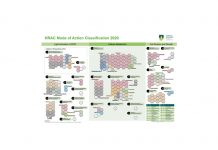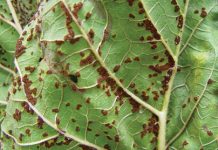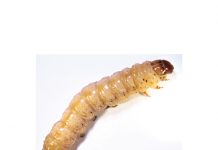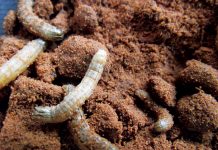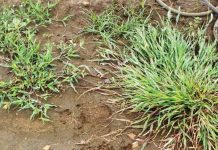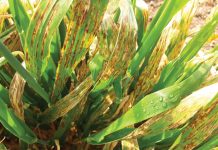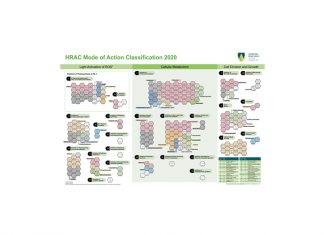
Dr Marinda Visser,
director: Strategic Pro-jects and Partnerships
in Agriculture – Innova-tion Africa@UP, University of Pretoria
 Prof Bernard Slippers,
Prof Bernard Slippers, director: Forestry and Agricultural Biotechnology Institute and Future Africa, University of Pretoria

Prof Jolanda Roux,
extraordinary professor, Forestry and Agricultural Biotechnology Institute, University of Pretoria
It is estimated that pests and pathogens destroy between 10% and 40% of food production globally. There are ways to deal with this problem, starting with biosecurity and plant health management systems.
But this is yet another system that’s been put under tremendous pressure by the emergence of COVID-19. Under restrictions on human movement – necessary to curb the spread of the virus – the field and laboratory work that are crucial for surveillance and management of plant diseases have been severely curtailed.
Research and specialist services delivered by universities, for example, have in many cases temporarily closed or are operating at minimal levels. Skipping even a few months could mean missing a key moment in a pest’s life cycle and a chance to intervene and slow its further spread. The pressure on government funding that is required to sustain these systems is also threatening to bring these programmes to a standstill.
Plant diseases require as much attention now as ever to ensure that food systems are in place in the next season.
Under threat
Plant health epidemics can be caused by viruses, bacteria, fungi, nematodes or insects. Many of these organisms originate in one part of the world and rapidly spread to threaten food crops or trees globally. They often jump from a host plant on which they do not cause significant epidemics, to a different plant that does not have resistance to them.
Global biosecurity systems are under pressure to deal with the scale of the problem. For example, trade in plants and plant parts is known to be a major pathway of spread of pests and pathogens. But even well-resourced systems in the United States cannot cope with the inspection of the billions of plants traded annually. The problem is bigger in developing economies, including many in Africa, because of a lack of capacity.
Biosecurity relies on four things: prevention (at port of entry); preparedness (early detection, diagnostics and control); response (to contain and eradicate or manage plant pests and diseases) and recovery (systems for regulating eradication, management or restoration).
Unfortunately, insect and fungal pests can spread naturally across borders. Once a pest is introduced into one country a whole continent’s food, forestry and native systems could be threatened. An example is the fall armyworm, which was first reported in West Africa in 2016 and spread across the continent, reaching South Africa one year later.
Estimates in 2017 put potential losses in maize production in Africa due to this pest at between $2,4 to $6,2 billion. Such production losses could lead to food insecurity in many African countries.
Plant health crisis examples
There are hundreds, if not thousands, of pests and pathogens threatening African countries. Here are just three examples:
On a main food crop: Maize lethal necrosis disease is caused by the joint infection of more than one virus and can completely devastate a maize crop. The disease first emerged in Kenya in 2011; it has since spread to surrounding countries with devastating yield losses. Identification requires highly specialised laboratory analysis to confirm the identity of the viruses.
In plantation forestry: The Sirex wood wasp is native to Europe, but has caused damage of billions of dollars since it was introduced in New Zealand around 1900 and eventually around the world. A biological control programme that uses a parasitic nematode to sterilise the wasp is widely applied, and has saved the South African forestry industry hundreds of millions of rand. This programme depends on thorough national monitoring of the wasp infestation levels and the timely release of the biological control nematode.
On native, urban and agricultural trees: The polyphagous shot hole borer is a tiny ambrosia beetle that introduces a fungal symbiont into trees on which its offspring will feed. In South Africa it has been recorded on more than a 100 different tree species and on fruit crops such as avocado. It can kill some mature trees in a matter of months.
Tracking of the spread, the physical removal of infested trees and the development of biological control are all urgent needs and require specialist knowledge and laboratory support for identification. Monitoring also includes citizen science initiatives in urban areas, and it requires researchers to travel to confirm new infestations.
All of this has been set back by restrictions on human movement designed to contain the spread of COVID-19. Researchers must now work out how to catch up, and plan for the coming years in which the virus is likely to continue being a global concern.
What should be done?
Firstly, an assessment is needed of the impact of the original COVID-19 responses on plant health biosecurity systems, so as to plan for coming months and years. We would argue that in future, existing biosecurity systems must remain in full operation. This can be done safely, in line with global guidelines around protection from the virus.
Secondly, it is critical to recognise that the future of food security is linked across borders. Weak biosecurity in one country threatens neighbouring countries and whole continents. It is important to review regulations and their implementation to secure food supply, industries and the environment. Countries also need strong research funding and capacity.
This article was first published in The Conversation (www.theconversation.com).



